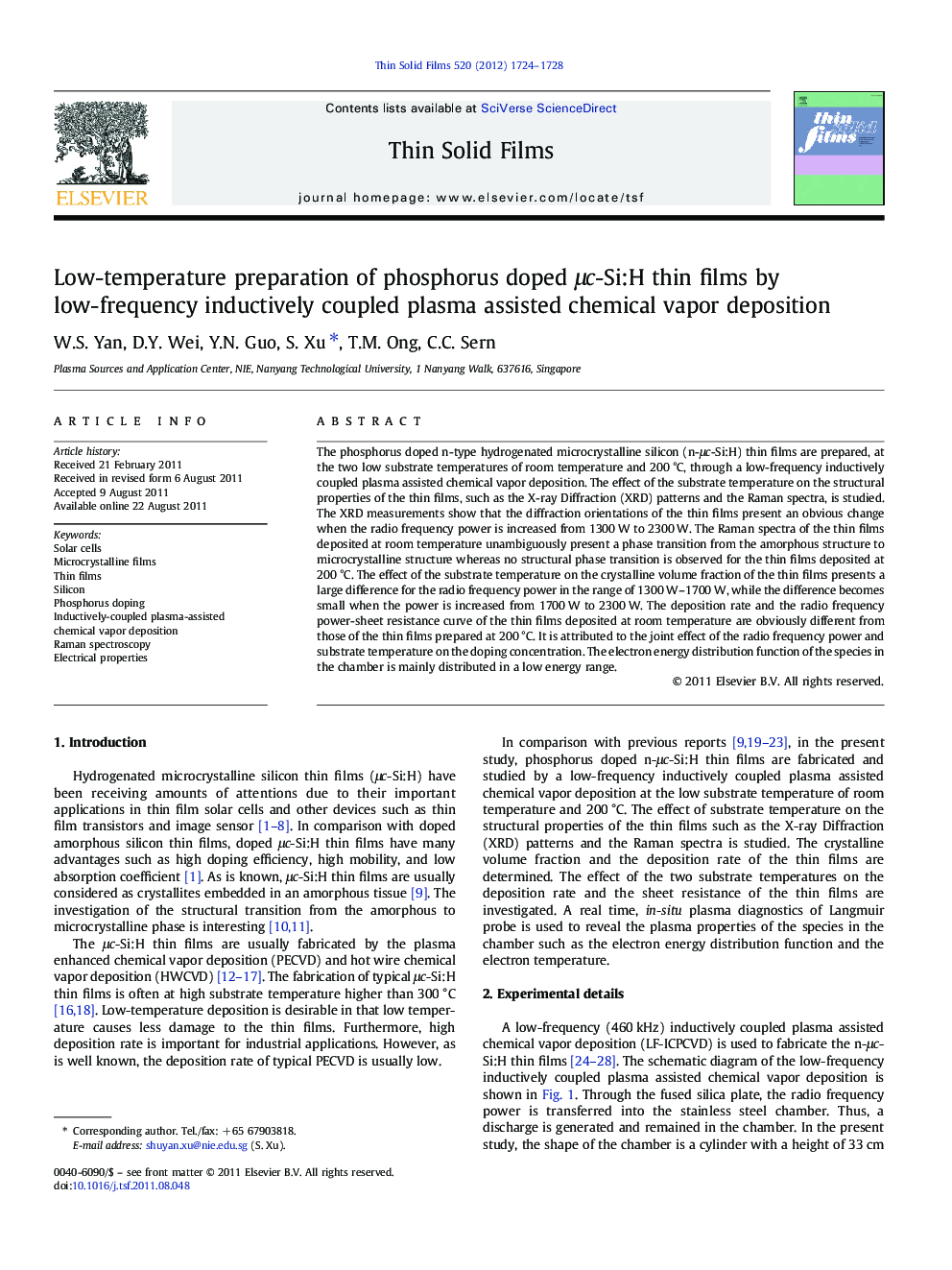| Article ID | Journal | Published Year | Pages | File Type |
|---|---|---|---|---|
| 1667297 | Thin Solid Films | 2012 | 5 Pages |
The phosphorus doped n-type hydrogenated microcrystalline silicon (n-μc-Si:H) thin films are prepared, at the two low substrate temperatures of room temperature and 200 °C, through a low-frequency inductively coupled plasma assisted chemical vapor deposition. The effect of the substrate temperature on the structural properties of the thin films, such as the X-ray Diffraction (XRD) patterns and the Raman spectra, is studied. The XRD measurements show that the diffraction orientations of the thin films present an obvious change when the radio frequency power is increased from 1300 W to 2300 W. The Raman spectra of the thin films deposited at room temperature unambiguously present a phase transition from the amorphous structure to microcrystalline structure whereas no structural phase transition is observed for the thin films deposited at 200 °C. The effect of the substrate temperature on the crystalline volume fraction of the thin films presents a large difference for the radio frequency power in the range of 1300 W–1700 W, while the difference becomes small when the power is increased from 1700 W to 2300 W. The deposition rate and the radio frequency power-sheet resistance curve of the thin films deposited at room temperature are obviously different from those of the thin films prepared at 200 °C. It is attributed to the joint effect of the radio frequency power and substrate temperature on the doping concentration. The electron energy distribution function of the species in the chamber is mainly distributed in a low energy range.
